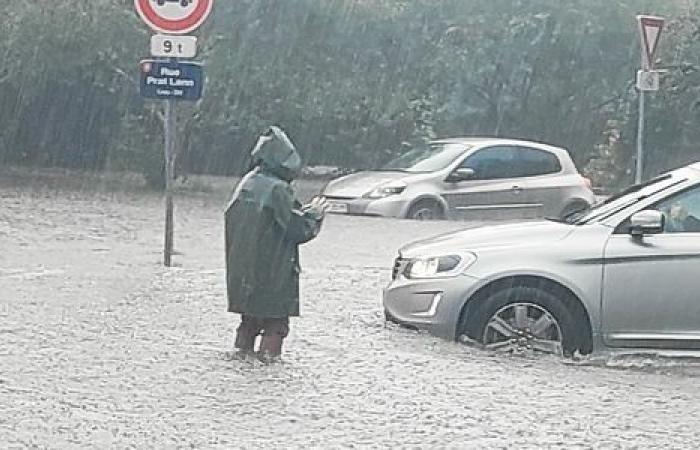Why did the water rise so high on Tuesday evening near the France Libre roundabout, at the top of Boulevard de Monsabert? The first explanation is obvious: it is firstly because of the torrential rains which fell to the west of Vannes. 77 mm of water fell in half an hour while the maximum in one day was 38.7 mm in the last thirty years.
This flood fell on soils already soaked by six months of rain and the runoff effect has increased with the urbanization of western Vannes over the last twenty years. Bad luck, the storm, instead of progressing, remained static above Vannes.
A network of buffer basins along the Pargo
To counter the risk of flooding, a network of retention basins has been created or preserved along the Pargo, the small stream which has its source next to the Leclerc Center. The first is located near the hypermarket. The next one is between the BMW dealership and the Foir’Fouille, followed by the one located behind the Kerlann biscuit factory. Then a 1 meter diameter pipe which passes under the RN165 brings the water to a flood expansion zone behind the Midas garage, very close to the flooded area on Tuesday evening.
The pipeline then passes under the France Libre roundabout to reach the Pargo pond, which serves as a retention basin. The stream continues its path in the pipe which passes under the D101, before joining another flood expansion zone located near the Saint-Joseph high school, then the Vallons de Kercado, then Bernus before flowing into the Gulf.
“Ultimately, these structures are designed for ten-year but not hundred-year rainfall”…
The funnel effect
The problem is that these buffer basins were sized for normal rainfall but not for a deluge such as that of June 18. “Ultimately, these structures are designed for ten-year rains but not hundred-year rains,” insists François Ars, deputy mayor for public spaces on the ground all Tuesday evening.
Full to bursting on Tuesday evening, the retention basins were no longer able to absorb even the slightest drop of additional water. Hence a clogging of the pipe with very strong pressure which could cause the covers of the buffers to blow off, as was the case on rue Bugale, in the flooded area, one of the lowest points in the sector.
“The water even went over the dike of the Pargo basin. It’s therefore not a question of valves,” analyzes Gaëlle le Roux, director of water and sanitation at Gulf of Morbihan Vannes Agglomération.
A study on the hydraulic functioning of the Pargo
As of Tuesday evening, François Ars indicated that the City was going to request an inspection of the pipes… The agglomeration plans to carry out a study on the entire length of the watercourse (the Pargo) and its hydraulic functioning, from the Leclerc Center to to Bernus. “We have to see at each stage what actions to put in phase,” says Samuel André, director of the environment and in charge of aquatic environments at the agglomeration. Should flood expansion zones be enlarged? Bring part of the Pargo back into the open air in certain places and thus gain capacity? Residents and businesses flooded on Tuesday are waiting for answers.







